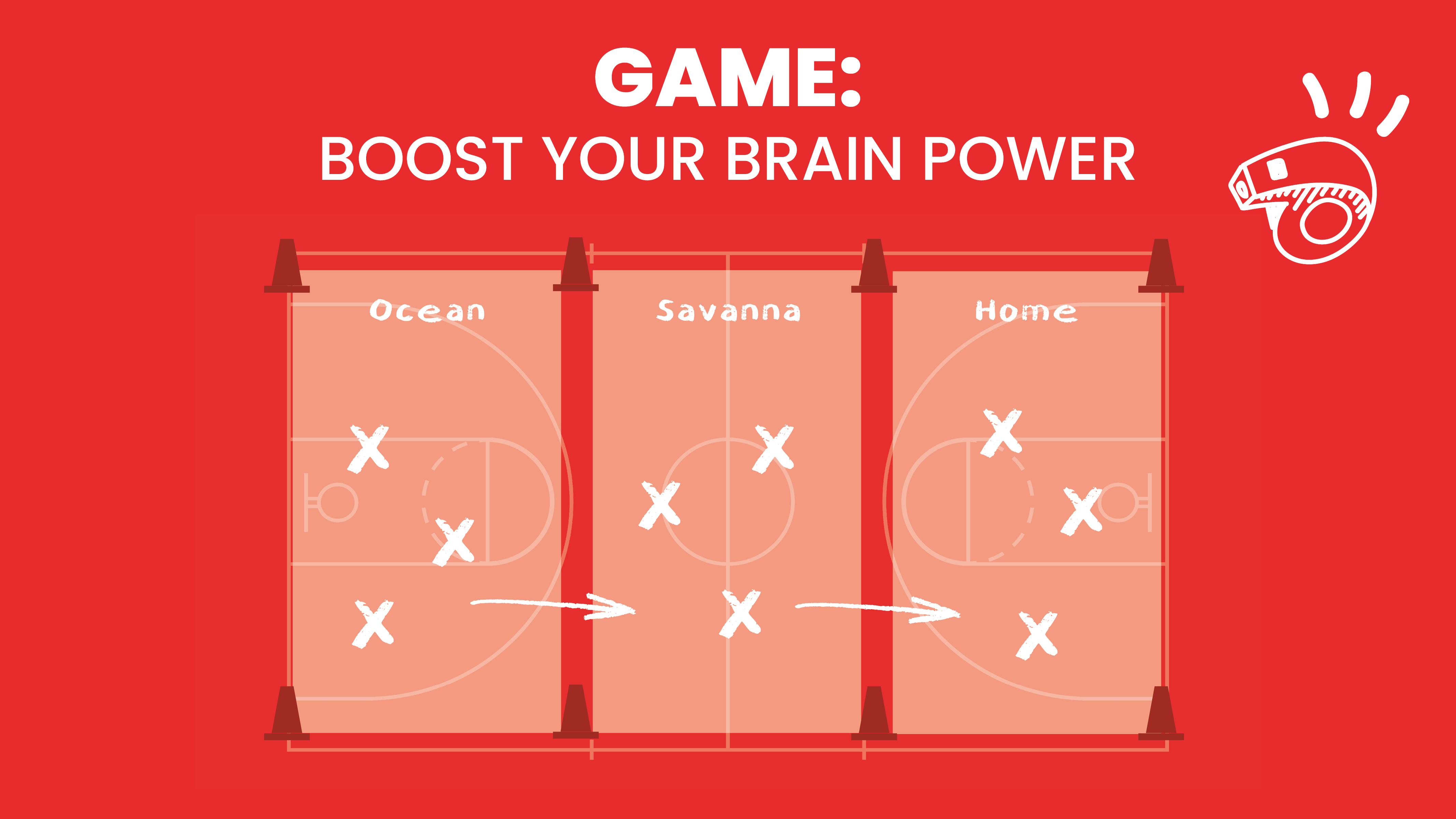Boost Your Brain Power
In this PE game, learners demonstrate animal movements at low, moderate, and vigorous intensity levels.

Game
In this PE game, learners demonstrate animal movements at low, moderate, and vigorous intensity levels.

Move many times and many ways throughout the day to power your brain!
Say: Let’s pretend to move like different animals!
Move like a cat. Move slowly or crawl on your hands and knees; pause to arch your back. Use your arms as paws. Be careful not to enter another learner’s personal space. (Allow learners to move for 30–45 seconds.) Now stop and put your hand on your heart. What do you feel? How fast or slow is your heart beating? You should be able to sing and speak normally at this heart rate. (A normal heartbeat indicates a low exercise level.)
Now, move like a rabbit. Hop to the opposite side of your area. (Allow 30–45 seconds for movement.) Stop and feel your heartbeat again. Does it feel different? You may have more trouble singing at this heart rate, but still be able to speak. (The heart beating faster indicates a moderate exercise level.)
Next, move quickly like a gazelle around the perimeter of your area. (After 30-45 seconds, ask the learners to feel their heartbeats once more.) Your heart is beating even faster because this was a vigorous exercise. You may have trouble speaking at this heart rate.
Let's cool down and move slowly like a cat again. This will help your heart rate slow down.
Animals and people move in many different ways and at many different speeds. When you move slowly, like a cat, your heart rate may not be as fast as it is after running, but you are improving your flexibility and balance.
When you move at a medium (moderate) level, like a rabbit, you strengthen your muscles, including your heart muscle! When you move fast (at a vigorous level), like a gazelle running, your heart beats faster making your body stronger and healthier!
The number one thing you need to know is that your body benefits from all kinds of movement. Move many times and many ways throughout the day!
Today we are going to pretend to visit different animal habitats and explore slow, medium, and fast (low, moderate, and vigorous) animal movements.
Challenge yourself to boost your brain power with medium to fast (moderate to vigorous) movements throughout the day.
Learn about setting short-term goals during a throwing and catching activity.
Play GameWould you Rather? is a fun and engaging physical education game designed to teach learners about healthy choices through movement. The game involves a series of challenges that require students to use various movements and actions to represent different healthy behaviors.
Play GameIn this PE game, learners play a fun and energetic version of Rock, Paper, Scissors to reinforce healthy ways to recharge throughout the day.
Play GameThis PE game is a modified version of the popular game "Fishy, Fishy, Cross My Ocean." In this version, learners are encouraged to incorporate various fitness activities like hopping or skipping into the game.
Play GameRotate through station activities to learn about healthy choices to replace screen time.
Play Game